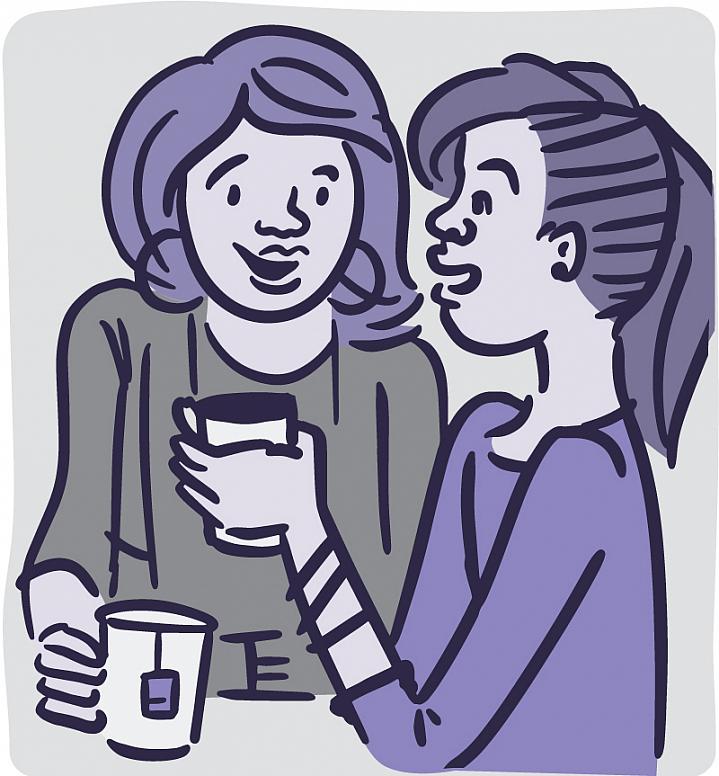Hurtful Emotions
Understanding Self-Harm

People deal with difficult feelings in all sorts of ways. They may talk with friends, go work out, or listen to music. But some people may feel an urge to hurt themselves when distressed. Harming or thinking about harming yourself doesn’t mean you have a mental disorder. But it is an unhealthy way to cope with strong feelings. Finding new ways to cope can help you get through difficult times.
Some unhealthy ways people may try to relieve emotional pain include cutting, burning, or hitting themselves. These behaviors can be difficult to detect. People usually keep them a secret. Wounds can often be treated at home and covered with clothing or jewelry.
“The largest percentage of people who engage in non-suicidal self-injuring behaviors are teenagers,” says Dr. Jennifer Muehlenkamp, an NIH-funded psychologist at the University of Wisconsin-Eau Claire. Around 2 out of 10 teens and college-aged students report trying this behavior at least once.
Those are the key ages because youths are changing environments, Muehlenkamp explains. “Transitioning into college or from junior high into high school creates a lot of potential change. You lose the familiarity of your social group, and your social support might shift. There’s a lot of new stress and pressures.”
People who are anxious, are depressed, or have an eating disorder are also more likely to turn to self-injuring behaviors. So are those in sexual minority groups who experience discrimination and bullying, such as those who identify as gay, lesbian, bisexual, or transsexual.
“Self-injury is a sign that someone is struggling,” says Muehlenkamp. “Many youths transition out of it. But those who engage in it more repetitively and chronically may benefit from a direct clinical intervention.”
If you’re a parent or caregiver who’s concerned, look for frequent unexplained injuries and clues like bandages in trash cans. Watch to see if the person wears appropriate clothing for the weather. Someone who is self-harming may wear long pants or sleeves to cover their injuries, even when it’s hot.
“The way most people find out is the person who is self-injuring will disclose it,” Muehlenkamp says. They often tell a friend or a sibling first.
If someone confides in you, “your first reaction is essential to whether or not they will seek help,” Muehlenkamp explains. “Be as nonreactive and nonjudgmental as possible.”
Not everyone who self-injures is suicidal. But the only way to know is to ask. If they express any suicidal thinking, get them connected with a mental health provider. You can also call the National Suicide Prevention Lifeline at 1-800-273-TALK (8255) for advice.
Parents can open conversations with their kids by asking them if they’ve heard of self-harming behaviors or if they know friends who do it. If a friend has confided in them, they can offer to go talk to a trusted adult with their friend to get them help.
There are no medications for treating self-injuring behaviors. But some medications can help treat mental disorders that the person may be dealing with, like depression or anxiety. Mental health counseling or therapy can also help you learn new ways to cope with emotion. See the Wise Choices box for tips on handling strong emotion.
NIH Office of Communications and Public Liaison
Building 31, Room 5B52
Bethesda, MD 20892-2094
nihnewsinhealth@od.nih.gov
Tel: 301-451-8224
Editor: Harrison Wein, Ph.D.
Managing Editor: Tianna Hicklin, Ph.D.
Illustrator: Alan Defibaugh
Attention Editors: Reprint our articles and illustrations in your own publication. Our material is not copyrighted. Please acknowledge NIH News in Health as the source and send us a copy.
For more consumer health news and information, visit health.nih.gov.
For wellness toolkits, visit www.nih.gov/wellnesstoolkits.



